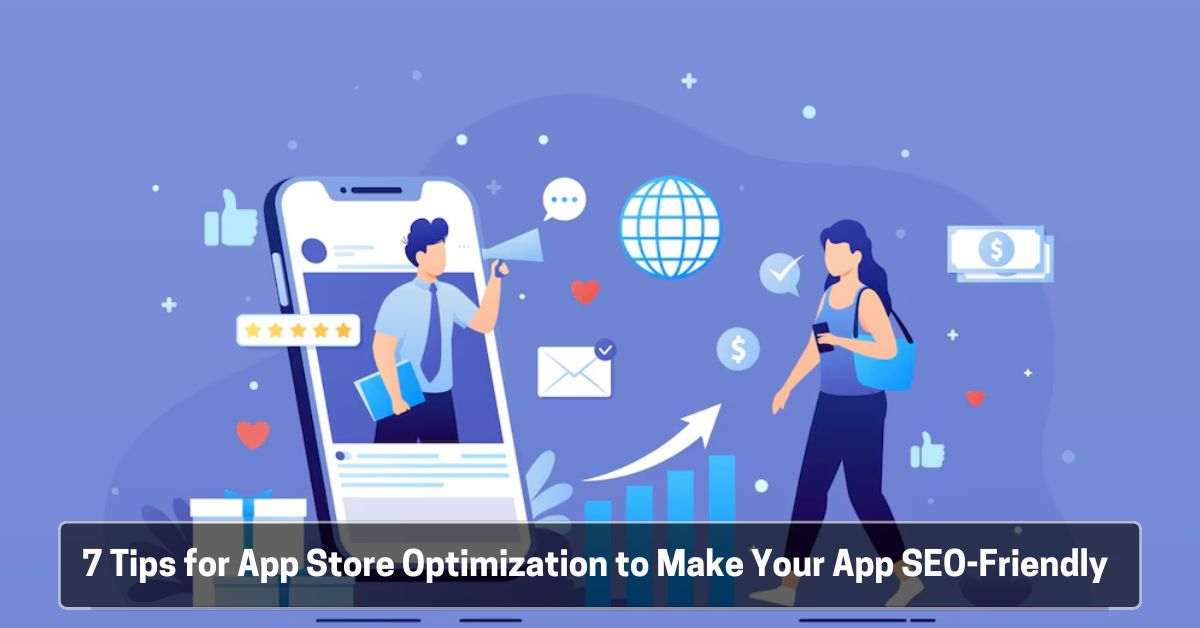7 Tips for App Store Optimization to Make Your App SEO-Friendly

You have built a great mobile app. Now you need to optimize your app, so it appears on top in the concerned app store. In other words, app store optimization (ASO) is like SEO for your mobile app. And like SEO, ASO also has two components: On-page factors and Off-page factors. On-page factors include app title, description, and keywords. While off-page consists on usage weights, downloads, reviews, CTR, updates etc. Let’s see how to improve your chances to appear within the app store searches.
7 App Store Optimization Tips:
1. Choose your keywords carefully: keywords are perhaps the most important factor for ASO. Research your keywords with Google Keyword Planner, AppAnnie, or SensorTower. These tools will help you find the keyword suggestions along with competition analysis. App stores let you include 100 characters for keywords. So, use this space tactfully. Here are some tips:
- Get rid of spaces. Use commas instead. Remember, this list is only visible to you. So, avoid including spaces after commas.
- Don’t use stop words like prepositions and articles.
- Write numbers in numeric form rather than text.
- Use shorter keywords.
2. Always include keywords in the app title: According to a MobileDevHQ study, it’s seen that apps that have keywords in title have 10.3% more chances to rank.
Here are some tips on how to incorporate keywords in title: Use the first 25 characters as much as possible to add keywords, as only this much is displayed when users scroll down the list of apps within an app store.
- Don’t use special characters in the title, as they are never indexed by search engines.
- Don’t copy and paste a top app’s keywords, as this practice cannot be considered as plagiarism.
- Don’t use category name in the title.
- Don’t fall prey of keyword cannibalization (The term is used when one keyword is overused, creating an impression of spamming)
3. Understand the difference between app stores: Even though the fundamentals are all the same for different app stores, but there are some subtle aspects that you need to keep in mind while optimizing your app for Apple Store, Google Play, or any other app store. Let’s take a look at a few basic factors of ASO in Google Play and Apple Store. Google Play:
- The app title space is limited to 25 characters.
- You must focus on the app description to include keywords
- You can use your app name 3-5 times in the description without breaking the normal cadence of the content.
- When you’ll link your app on Google Play listing, make sure you add the keyword within the link.
- Don’t forget to integrate Google+
Apple Store:
- If you’re using IAP (in-app purchase) in the ASO process, you need to name the IAP relevant to the app and the genre to leverage key phrases
- Create a keyword-rich app title.
- With every update to the app, review these keywords and change if necessary
- At least 5 good reviews are required at the initial phase of ASO for Apple Store
Similarly, if you’re looking forward to optimize your app for other app stores, you need to find out the best practices. The optimum solution to the problem is, understand the app store before optimizing your app for it. Learn about the functionalities and implement them in your optimizing process. 4. Cope up with the ever-changing marketplace: Frequent updates are very important to stay on top of the app list as well as on your users’ mind. So, offer user-friendly updates with better and advanced features at a regular interval. In this course, whenever you will release a new update, make sure you review and change the previous set of keywords. Review your app title, description, icon, and screenshot every time to look for an updating opportunity. This practice will make your app more competitive. 5. Ask for more reviews from your users: Reviews play a pivotal role in the app success stories. Whenever a user lands on your app page in an app store, he/she is able to view all the reviews and ratings.
All negative reviews or ratings as well as no reviews will harm your app performance. So, you need to encourage your current users to rate and review you. Many apps show pop-ups for reviewing during the in-app sessions.
6. Choose the right visuals and screenshots to encourage downloads: Help your users get a clear picture of what your app is all about. Always choose the best graphics to showcase the best features of your app. This is the ultimate area, where you can influence your users to actually download your app.
7. Try blogger outreach: Bloggers and publishers can spread the word to a great extent. And they can drive downloads too. When you’re ready to launch your mobile app, try to make a list of bloggers in your niche. Ask them to try your app for free and then write a review on their blog. They have their own following. Once your app gets a genuine review from them, their readers will be highly influenced to try it out too.
Over to you:
Have an app? All set to market it? Read more about app store optimization to supercharge your app downloads.

